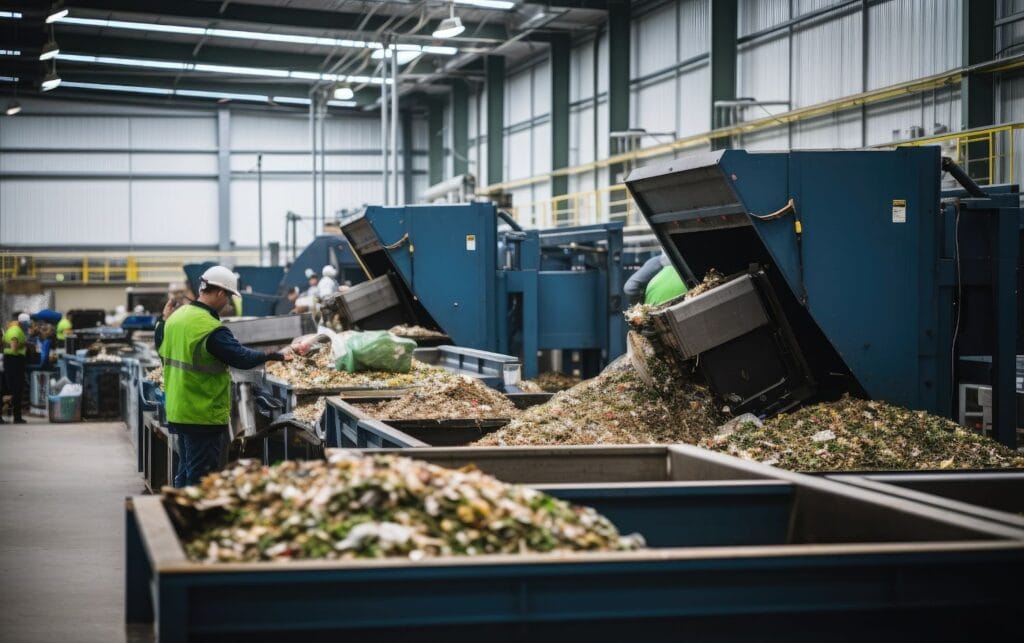What Is Sustainable Materials Management? Types and Benefits

In a world rapidly adapting to green initiatives, the concept of sustainable materials management (SMM) is gaining prominence. It is a systemic approach to using and reusing materials more productively over their entire life cycles.
SMM represents a key shift in how society thinks and deals with materials. By focusing on the importance of conserving resources and reducing waste, SMM not only reduces environmental impacts but also brings new opportunities for economic development, reducing costs, and improving human health.
What Are ‘Materials’?
In sustainable materials management, ‘materials’ are the elements and substances used and managed to fulfill various human needs and wants. They are central to our economy and daily lives and are classified into various categories, including:
- Fuel Materials: Such as coal, oil, and renewable energy sources that power our homes, vehicles, and industries.
- Non-Fuel Materials: Including metals and minerals used in construction, manufacturing, and many everyday products.
- Food: Essential for nourishment, derived from natural resources.
- Consumer Goods: Products manufactured from raw materials for direct consumption or use.
The global consumption of these materials increased rapidly over the last century, prompting the need for more sustainable approaches to materials management to conserve resources and reduce waste.
What Are Sustainable Materials?
Sustainable materials are used and managed to minimize their environmental impact, conserve energy and natural resources, and can be recycled or disposed of in an environmentally sound manner. These materials, often characterized by reduced waste and toxic chemicals, are managed to mitigate negative environmental impacts from raw material extraction to end of life.
Examples of sustainable materials include:
- Recycled Products: Items made from reused materials, reducing the need for raw material extraction.
- Biodegradable Products: Goods that can be broken down naturally, reducing solid waste.
- Eco-Friendly Packaging: Packaging made from recycled or biodegradable materials, aiming to reduce waste.
Sustainable materials are integral for construction, packaging, and transportation sectors. They are tailored to reduce the environmental impacts and energy consumption during their life cycle.
Integrating sustainable materials is not just an environmental need but is also emerging as a legal requirement in many jurisdictions, governed by stringent environmental protection laws and regulations.
Sustainable Materials Life Cycle
The life cycle of sustainable materials is characterized by a holistic approach that considers the entire life, from production to disposal. Unlike traditional materials, sustainable materials are designed with the future in mind, focusing on reducing waste and environmental impacts at every stage.
In the waste management hierarchy, the life cycle of sustainable materials falls under the waste reduction and recycling tiers, prioritizing the reduction of waste generation and recycling of materials to extend their useful life. Key stages of a sustainable material’s life cycle include:
- Resource Extraction: Focused on minimal environmental impact and conserving natural resources.
- Production: Manufacturing processes that reduce waste and are energy-efficient.
- Usage: Products are used in a manner that extends their life and functionality.
- End of Life Management: Efficient recycling or disposal processes that are environmentally friendly.
The SMM approach integrates actions targeted at reducing environmental impacts and conserving resources across the entire life cycles of materials.
It is a broader systemic approach than end-of-life management, connecting the dots between using natural resources, material consumption, and waste management to the overarching goal of environmental protection and human health improvement.
In essence, sustainable materials management underscores a future where resources are used and managed in manners that are economically sound, environmentally responsible, and beneficial to societal development.
Benefits of Sustainable Materials Management

Sustainable materials management (SMM) presents various benefits across businesses, the environment, and customers, promoting a more responsible and efficient use of materials.
For Businesses
- Cost Reduction: Businesses can reduce raw material extraction and waste management costs.
- Process Efficiency: Implementation of SMM leads to improved process efficiency, enhancing productivity.
- Brand Image: Adopting sustainable practices elevates a company’s image, demonstrating corporate responsibility.
For the Environment
- Resource Conservation: Helps conserve natural resources, reducing the strain on ecosystems.
- Waste Reduction: Minimizes waste generation, promoting recycling and reusing materials.
- Pollution Reduction: Decreases pollution by reducing the need for raw material extraction and lowering waste production.
For Customers
- Quality Products: Offers better quality products manufactured considering environmental impacts and long-term use.
- Health and Safety: Promotes products produced considering human health and safety regulations.
- Consumer Awareness: Elevates consumer awareness on sustainable practices, influencing positive purchasing behaviors.
The implementation of SMM aids in achieving international environmental protection goals and commitments. It serves as a conduit to align business operations with global standards on environmental impacts and human health.
Sustainable Materials Management vs. Circular Economy vs. Zero Waste
Sustainable materials management, circular economy, and zero waste are all frameworks aimed at minimizing waste and using resources most efficiently. They share the fundamental principle of designing out waste and pollution, keeping products and materials in use, and regenerating natural systems.
Circular Economy
A circular economy is focused on designing out waste, keeping products and materials in use, and regenerating natural systems. It emphasizes a closed-loop system where materials are reused, repaired, or recycled.
Benefits:
- Enhanced resource productivity
- Reduction in environmental footprint
Zero Waste
Zero waste targets the elimination of waste entirely, not just managing it. It emphasizes a lifestyle change to avoid the generation of waste.
Benefits:
- Minimizes pollution
- Conserves resources
While both the circular economy and zero waste contribute significant advantages, Sustainable Materials Management encompasses a broader scope, integrating the principles of resource efficiency, waste reduction, and environmental protection across the entire life cycles of materials.
Final Thoughts
Understanding sustainable materials management is crucial today, with the pressure on natural resources and the environment continuing to intensify. This comprehensive approach is not just a business strategy but a global necessity. It emphasizes the integration of policies and actions that improve resource use, ensuring minimal environmental impacts associated with materials.
Implementing SMM is not merely about managing waste but entails a strategic approach towards the entire lifecycle of materials — from extraction to disposal. It’s about changing how we perceive materials, not as waste, but as valuable resources that should be used efficiently and sustainably.
Adopting SMM means stepping into a future where our economy thrives, and our environment is preserved for generations.
